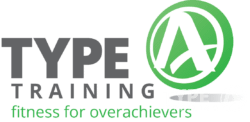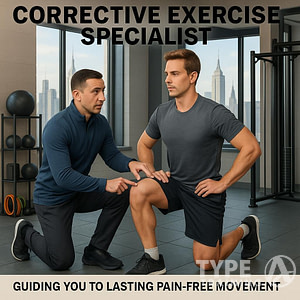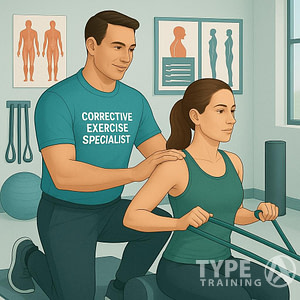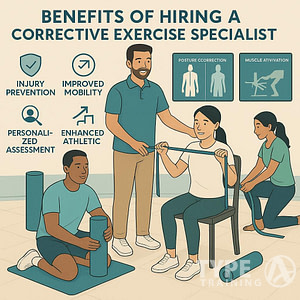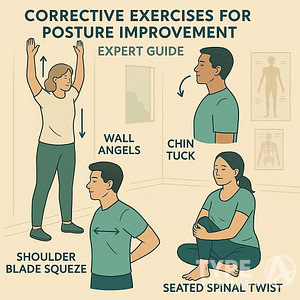If nagging pain or poor posture keeps holding you back, you really don’t have to accept it as your new normal. A Corrective Exercise Specialist in Manhattan looks for the root cause of movement issues and builds a plan that restores balance, strength, and comfort. A corrective exercise specialist Manhattan can guide you through effective strategies tailored to your needs.
You get more than a workout—you get a strategy for pain-free movement and fewer injuries down the line.
Living in Manhattan usually means sitting at a desk for hours, pounding the pavement, or squeezing in tough workouts. These routines can lead to muscle imbalances, joint stress, and awkward movement patterns.
Popular posts:
A specialist steps in to help you fix these problems with exercises that target posture, reduce discomfort, and just make moving around feel easier.
Maybe you want to stay active, bounce back from old injuries, or just up your game in sports. Corrective exercise gives you a safe, effective path forward.
By working on how your body moves, you get to enjoy training, daily life, and better health with less pain and a bit more confidence.
Key Takeaways
This is where a corrective exercise specialist Manhattan can significantly enhance your training experience.
- Corrective exercise goes after the root cause of pain and imbalance
- Specialists create tailored programs to restore healthy movement
- Good posture, strength, and performance start with proper alignment
What Is a Corrective Exercise Specialist?
A Corrective Exercise Specialist (CES) is a fitness pro who checks how you move and spots imbalances that might cause pain or hold you back. They focus on posture, joint mobility, and movement quality—not just making you sweat or lift heavier.
Unlike a typical personal trainer, a CES digs into the why behind your movement struggles. While trainers help you get fit, a CES creates targeted strategies to deal with the real reasons for your discomfort or dysfunction.
With a CES, you can expect:
- Detailed movement assessments
- Spotting weak or overactive muscles
- Exercise plans that bring your body back into balance
- Guidance on proper movement patterns for both daily life and workouts
Here’s a quick side-by-side:
| Personal Trainer | Corrective Exercise Specialist |
|---|---|
| Focuses on goals like weight loss or strength | Focuses on fixing movement problems and pain |
| Designs general workout plans | Creates custom corrective programs |
| Boosts overall health and performance | Restores proper function before pushing performance |
When you work with a CES, you get exercises that build strength and help you move with less strain. That makes workouts safer and supports progress in the long run.
Why Manhattan Residents Need Corrective Exercise
Living in Manhattan often means endless desk hours, jam-packed commutes, and not much time to think about posture. These habits usually lead to muscle tightness, rounded shoulders, and nagging lower back pain.
Over time, small problems like these can really limit your movement. Meanwhile, the city’s fitness scene keeps you running, cycling, and signing up for group classes. That’s great, but if your body moves with imbalances, you might end up with repetitive stress or overuse injuries.
Corrective exercise can help you:
- Fix posture and alignment
- Ease joint and muscle pain
- Restore healthy movement patterns
- Prevent injuries at the gym or just doing daily stuff
You don’t have to be hurt to benefit. Corrective strategies help both desk
How Corrective Exercise Specialists Assess Movement Dysfunction
A corrective exercise specialist starts by watching how you move—during daily life and basic exercises. They’re looking for imbalances, compensations, or restrictions that mess with your posture, strength, or mobility.
Assessment comes first because it shows where you’re at. Without that, it’s nearly impossible to put together a plan that actually helps you move or feel better.
One tool you’ll probably run into is the overhead squat assessment. Here, you squat down with your arms up, and the specialist keeps an eye on your knees, hips, and shoulders to spot any odd movement or compensation.
They might also check:
- Posture while you stand or sit
- Joint mobility in hips, shoulders, and ankles
- Balance and stability—just to see how steady you are
Specialists usually organize their findings in a straightforward way:
| Area Tested | What They Look For | Possible Issue Found |
|---|---|---|
| Posture | Alignment of spine and shoulders | Rounded shoulders, forward head |
| Squat Pattern | Knee and hip movement | Knees collapsing inward |
| Mobility | Range of motion in joints | Limited ankle or hip motion |
With all this info, your specialist can start making connections between how you move and any pain or limits you feel.
Benefits of Hiring a Corrective Exercise Specialist in Manhattan
When you work with a Corrective Exercise Specialist in Manhattan, you get someone focused on pain relief and smoother movement. They spot muscle imbalances and movement quirks that often cause discomfort at work or in the gym.
You lower your risk of future injuries, too. Tackling the actual causes of movement issues means you can build real strength and mobility that lasts—especially if you’re stuck at a desk most days but go hard on weekends.
Performance gets a boost as well. Whether you’re an athlete, a gym regular, or just hustling through the city, moving better lets you train harder and bounce back faster.
Common Benefits at a Glance:
| Benefit | How It Helps You |
|---|---|
| Pain Relief | Reduces muscle and joint discomfort |
| Injury Prevention | Corrects imbalances before they cause problems |
| Improved Performance | Enhances strength, mobility, and efficiency |
Life in Manhattan moves fast, and that can take a toll on your body. A specialist tailors a plan that actually fits your schedule and goals—no generic routines here.
Whether you’re running in Central Park, hitting the gym, or just trying to stay active with a packed calendar, a Corrective Exercise Specialist can give you the tools to move better and feel less pain. Not a bad trade-off, right?
For more, check out our Corrective Exercise Specialist resources.
Corrective Exercise for Athletes: Enhancing Performance and Preventing Injury
If you’re active in Manhattan—maybe running in Central Park, lifting at CrossFit, or hitting yoga—your body takes a beating. Small imbalances or sloppy movement patterns sneak up over time and can hold you back. Corrective exercise steps in before those problems get serious.
You start learning to move with better alignment so the right muscles do their job. That way, you’re not overusing your joints or relying on weaker spots to pick up the slack.
Key benefits of corrective exercise for athletes:
- Improved posture for smoother, pain-free movement
- Reduced risk of injury by balancing muscle activation
- Better performance in strength, endurance, and mobility
- Faster recovery from training stress
Take running, for example—retraining your hips and core to stabilize can stop your lower back from overworking. For CrossFit, dialing in shoulder control helps protect you during overhead lifts. Even in yoga, fixing joint alignment means you can hold poses without nagging aches.
| Focus Area | Common Issue | Corrective Goal |
|---|---|---|
| Running | Hip drop, knee pain | Strengthen glutes, core stability |
| CrossFit | Shoulder strain, poor squat | Improve mobility, motor control |
| Yoga | Joint misalignment, tightness | Increase flexibility, balance |
The Science and Training Behind Corrective Exercise Specialists
Corrective exercise sits on a foundation of anatomy and biomechanics. You get to know how muscles, joints, and the nervous system all work together—or sometimes, don’t.
By studying movement, you spot weak or overactive muscles. Then you can put together simple, targeted exercises to help restore balance. That’s what keeps things safe and actually effective.
To become a corrective exercise specialist, you need some formal training. Certification programs teach you how to assess movement, plan exercises, and track progress without just guessing.
Some of the top certifications are:
- NASM-CES (Corrective Exercise Specialization)
- ACE Corrective Exercise Specialist
- MES (Medical Exercise Specialist)
- The BioMechanics Method CES
Each program covers functional anatomy, movement assessments, and program design. You’ll get a mix of theory and hands-on skills, which honestly is the only way to really learn this stuff.
| Certification | Focus Area | Common Use |
|---|---|---|
| NASM-CES | Human movement science | Fitness and performance |
| ACE CES | Functional anatomy and assessments | Personal training |
| MES | Post-rehab and clinical exercise | Healthcare settings |
| TBMM-CES | Musculoskeletal assessment | Pain reduction and recovery |
Tools and Equipment Used in Corrective Exercise
Corrective exercise usually relies on simple tools to help you move better and feel less sore. These are easy to adapt for any fitness level and let you zero in on specific muscles.
Foam rollers help release tight muscles and boost circulation. You can use them before or after workouts to shake off tension and get ready to move.
Resistance bands are lightweight, portable, and surprisingly versatile. They help you strengthen weak spots, improve mobility, and practice good movement—without lugging around heavy gear.
Stability balls make you work your balance and core. They’re great for posture drills and for getting multiple muscle groups firing together.
Other handy tools include:
- Light free weights for specific strength work
- Massage balls to dig into tight spots
- Balance pads for extra stability and joint control
| Tool | Primary Use | Benefit |
|---|---|---|
| Foam Roller | Muscle release, mobility | Reduces tension, aids recovery |
| Resistance Band | Strength and activation | Builds control and flexibility |
| Stability Ball | Balance and posture | Improves core stability |
Using these tools, you can tackle muscle imbalances, work on your posture, and just move more freely. Each piece has its place in a well-rounded corrective exercise routine.
Integrating Corrective Exercise into Fitness Programs
You can blend corrective exercise into your fitness plan without dropping the activities you actually enjoy.
Just add a few targeted movements to your routine. That way, you tackle muscle imbalances and improve posture while still building strength, flexibility, and endurance.
If you train in Manhattan, you probably already do strength training, yoga, or cardio. Corrective exercise fits right in by focusing on how you move, not just how much weight you lift or how many poses you knock out.
One easy way to combine both is to use corrective drills as part of your warm-up or cool-down.
This gets your joints and muscles ready for heavier work and helps cut down on discomfort during training.
Examples of integration:
- Add hip mobility drills before squats.
- Use core stability work between strength sets.
- Practice shoulder alignment exercises before yoga poses.
Here’s a quick comparison of how corrective exercise supports different activities:
| Activity | Corrective Focus | Benefit |
|---|---|---|
| Strength Training | Mobility + joint alignment | Safer lifts, better form |
| Yoga | Stability + balance | Improved posture, reduced strain |
| Cardio | Movement efficiency | Less fatigue, smoother motion |
Weaving these techniques into your schedule tends to make workouts more effective.
Your body just moves with less restriction, which feels pretty good.
Frequently Asked Questions
You might wonder what training a specialist should have, how sessions can reduce pain, and how often you actually need to go.
Maybe you’re curious how corrective exercise fits with your current workouts, or how it’s different from physical therapy. Fair questions.
What qualifications should I look for in a corrective exercise specialist?
Look for certifications from recognized organizations like NASM’s Corrective Exercise Specialist (CES).
These programs cover anatomy, movement science, and assessment skills. It’s also smart to check for hands-on experience with clients dealing with pain, posture issues, or movement imbalances.
How can a corrective exercise specialist help alleviate my chronic pain?
A specialist checks your posture, movement patterns, and muscle imbalances.
They design exercises that target weak or overactive muscles, which can take pressure off your joints and improve how you move. This approach often helps lower pain linked to poor alignment or repetitive strain.
What types of pain and movement issues can corrective exercise address?
Corrective exercise often helps with back pain, knee discomfort, hip tightness, and shoulder issues.
It can also improve problems from poor posture, muscle imbalances, or limited mobility. These methods focus on restoring balanced movement rather than just covering up symptoms.
How often should I see a corrective exercise specialist for treatment?
The frequency depends on your goals and how severe your issues are.
Some people benefit from weekly sessions, while others just need check-ins every few weeks. Your specialist will tweak the schedule as you start moving better.
Can corrective exercise techniques be integrated into my current fitness routine?
Yes, you can blend corrective exercises with strength training, cardio, or flexibility work.
These movements are often used as warm-ups, cool-downs, or accessory exercises. That makes it easier to stay consistent with your fitness goals while working on imbalances.
What is the difference between corrective exercise and physical therapy?
Physical therapy helps people recover from injuries, manage medical conditions, or get back on their feet after surgery.
Corrective exercise, on the other hand, tries to improve how you move, cut down on compensation patterns, and hopefully keep pain from popping up in the future.
They both deal with movement, sure, but corrective exercise isn’t meant to take the place of medical treatment. Instead, it can work alongside it.
